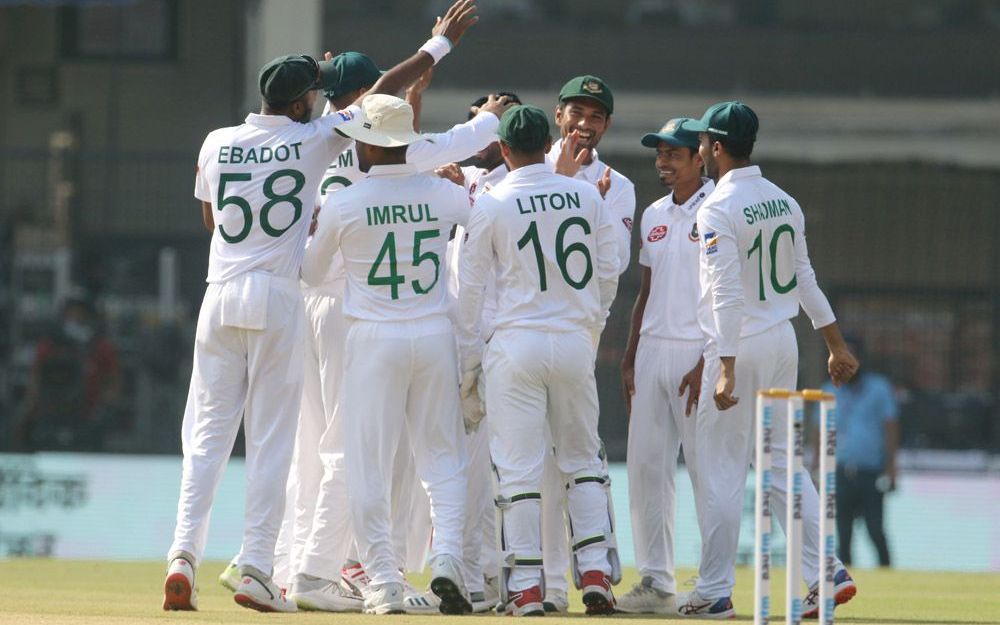Indore debacle inevitable and long-time in the making for Bangladesh cricket

BCCI
There is a problem in copying tactics mindlessly because more often than not, you will get it wrong. It might yield short-term results but when a strong opposition forces you out of your comfort zone, things start falling apart, and Bangladesh are currently experiencing one in India.
Post the 2015 World Cup debacle, England tried to copy the Brendon McCullum style in ODIs and only became successful because they used their brain to play around the tactics before zeroing on what worked best for them. Pakistan, on the other hand, had carefully pasted India’s ODI tactics into their system before the frailties became so evident that they needed some late surge to bow out of the World Cup league stage respectfully.
Bangladesh might have come a long way in limited-overs format but in Tests, they have never been able to, in what could be called cricketing cliches, “learn from the mistakes.” The drawn series against England in late 2016 was their moment of the renaissance but that hardly took them to heights, and think what, it is only Bangladesh who are to be blamed for it.
With Shakib Al Hasan leading them from the front in the spin department, and Mehidy Hasan and Taijul Islam providing the incisive string, Bangladesh understood that going India’s way of “all-spin at home” would cover one base. The Test wins over England, West Indies and Australia at home, and an away Test win in Colombo were enough to make the tactic a deep-rooted one.
As a matter of fact, in the two-match Test series against West Indies, spinners had 40 wickets in their kitty. Mustafizur was the only bowler to have rolled his arm over - a total of four overs in the first Test - as the team decided to go with an out and out spin attack in the second game. By then, the alacrity to replicate Ravichandran Ashwin-Ravindra Jadeja like success came to a point that spinners became a cultural phenomenon in National Cricket League (NCL) and central to Bangladesh’s plans.
Bangladesh’s then-coach Chandika Hathurusingha, often a coach who believes in instant results, was the major force behind the ploy and it had an overarching Sri Lankan theme attached to it. Since the time of Arjuna Ranatunga to Marvan Atapattu or Dimuth Karunaratne, the Island nation often had the tendency to go bonkers with spin bowling at home, leaving rusty pacers to dictate course away. India, despite adopting a similar spin-heavy tactic in the 2016-17 home season, managed to form a fine pace-bowling arsenal of their own behind the scene and are no longer dependent on rank turners to dominate at home.
If Bangladesh needed a reality check, Abu Jayed provided them with the perfect one in Indore. By removing India's golden quartet of Rohit Sharma, Cheteshwar Pujara, Virat Kohli and Ajinkya Rahane with pure skill with both new and semi-old ball, Jayed gave every stakeholder in Bangladesh cricket a reminder of the lost time. His success might have to do with him playing for Sylhet Division in the domestic cricket - a team that has produced some of the most leading pace bowlers in Bangladesh including Khaled Ahmed and Ebadat Hossain.
In more ways than one, the colossal defeat to India is also a true representation of Bangladesh’s lack of proper structure at the domestic level. For decades, National Cricket League has been a facade while Dhaka Premier League, and recently Bangladesh Premier League, have been gaining too much attention. While there is nothing wrong with DPL and BPL hogging the limelight - and that is how it should be - not a single administration has done anything worthwhile to develop the standard of NCL from where Test cricketers should be produced on a regular basis.
In India, for all the talks about the lack of importance to domestic cricket, here is a product of Ranji Trophy scoring double centuries for fun. Here is a pacer that dominated all the opposition at home with lethal pace and reverse swing after piling his trade under the damning heat of Nagpur. Here is an all-rounder spinning a web around after remarkable feats for Saurashtra in domestic cricket.
On the other hand, Bangladesh Cricket Board’s lack of interest in the NCL not only reflects from the senior players’ regular absence but also from the fact that a fast bowler can’t bowl more than 15 overs a day. It was a stipulation BCB had applied long back in order to manage the injuries - something that seems trivial in this day and age of cricket. Pace bowling needed a lift-off and the post-Hathurusingha era should have realised this right away.
In that regard, Russell Domingo’s press conference at the end of Day 2 of the Indore Test is bound to give some hope. “Bangladesh's Test record isn't good. They have won 13 Test wins in 115 matches. It has been happening for a long time. If we want to become a serious Test team, we need to make structural changes in the team to ensure performance at home and away," Domingo was quoted as saying.
“Structural changes” are the ones that Bangladesh Test cricket desperately cried for, for the longest time and now, with Bangladesh set to complete two decades in Test cricket, no excuse of being newbies would work for them. It is now or never, as pace looks for a lift-off in Bangladesh.
